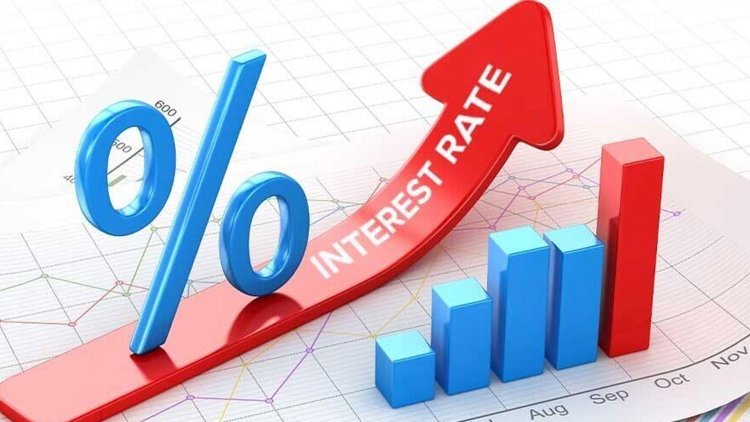Another big interest rate increase is most likely to occur in Europe
According to bank officials' public remarks, a three-quarters of a percentage point hike is the most likely result of the meeting.

On Thursday, the European Central Bank is expected to raise interest rates significantly for the second time in a row, emulating the U.S. Federal Reserve, demonstrating its will to combat high inflation that threatens to plunge the 19-country euro region into recession.
According to bank officials' public remarks, a three-quarters of a percentage point hike is the most likely result of the meeting. At its most recent meeting on September 8, the bank's 25-member governing council, which is chaired by bank President Christine Lagarde, approved the same record increase, mirroring the Fed's dramatic actions, which included a three-quarters of a point increase for the third consecutive month.
The ECB wants to lower inflation, which reached 9.9% in September, the highest level recorded since data collection for the 19 nations that use the euro began in 1997. That is far higher than the 2% target that is deemed ideal for the economy.
A significant rise would demonstrate the bank's commitment to bringing down consumer prices, but it also comes at a time of uncertainty for the eurozone economy. Many economists have a recession marked down for the latter half of this year and the beginning of next. While higher rates can help combat inflation, they can also have an adverse effect on the already sluggish economy.
The ECB has chosen to ignore recession concerns in favour of lowering inflation and inflation expectations. To this end, Carsten Brzeski, chief eurozone economist at ING bank, said that it is difficult to see how the ECB cannot move again by three-quarters of a point.
Analysts predict that the ECB will likely increase rates again in December.
According to a written report published on October 6, bank policymakers had divergent opinions regarding the strength of the economy at their most recent meeting. Energy prices have increased significantly this year due to the high level of uncertainty around the outcome of the war in Ukraine. This increased cost of living has reduced customers' spending power, made some factory labour unprofitable, and slowed the economy.
The cost of borrowing for households and businesses is significantly influenced by the ECB's interest rate choices. Making borrowing more expensive has been shown to reduce investment and spending, which, in turn, lowers demand for goods and services and, in principle, lowers inflation. For loans to banks, its primary refinancing rate is now 1.25%.
Even while the ECB claims it does not have a specific exchange rate in mind, the bank must also be aware of the euro's declining value in comparison to the US dollar. A declining euro causes inflation to worsen by increasing the cost of imports. On Wednesday, the euro went above parity with the dollar but is still close to its 20-year lows.
Higher U.S. interest rates, which draw capital into ventures priced in dollars, as well as, more generally, dimming economic prospects for Europe, are factors in the declining exchange rate. The loss of cheap Russian natural gas and a recession in China, a significant trading partner, are posing challenges for Europe.
Equally important, increasing ECB rates might help the euro by narrowing the interest rate differential with the US.
The bank might also come up with ideas for how to absorb excess economic stimulus that has outlived its usefulness now that rates are increasing without causing havoc in jittery markets.
The 4.9 trillion euros ($4.9 trillion) in bonds bought as part of other stimulus measures makes up a portion of that. The ECB is currently maintaining the amount of its bond holdings by using the proceeds from maturing bonds to purchase new bonds.
Due to the ECB's huge asset holdings, reducing the pile could cause bond markets to become unstable and raise borrowing rates for the government if it is not done with care.
When then-U.K. Prime Minister Liz Truss proposed tax cuts and expenditure increases last month that prompted concerns about state finances, it served as an example of the dangers of bond market instability. This led to a quick selloff in British government bonds and dramatically higher borrowing costs. The unrest led Truss to resign after 45 days in office and drove the pound to historic lows versus the dollar. It also drove up mortgage rates for millions of consumers.
The market commotion highlighted the risks of upsetting bondholders who are already alarmed by rising interest rates.
Although they are now relatively tranquil, bond markets could cause problems for the ECB. The cost of borrowing has increased for severely indebted European nations, particularly Italy, as rates climb.
During the eurozone's debt and financial crises from 2010 to 2015, rising borrowing rates posed a threat to the currency bloc's unity. If necessary, the ECB has laid out procedures to protect governments from perceived overly expensive borrowing costs.
The leaders of the central banks in Germany and the Netherlands have supported letting the bond stockpile run down starting in 2019.
According to Holger Schmieding, chief economist at Berenberg bank, "Bond markets are currently exceedingly volatile and uneasy." Early cutbacks in bond holdings, he said, might heighten market tensions and could ignite political issues.




 admin
admin 




















